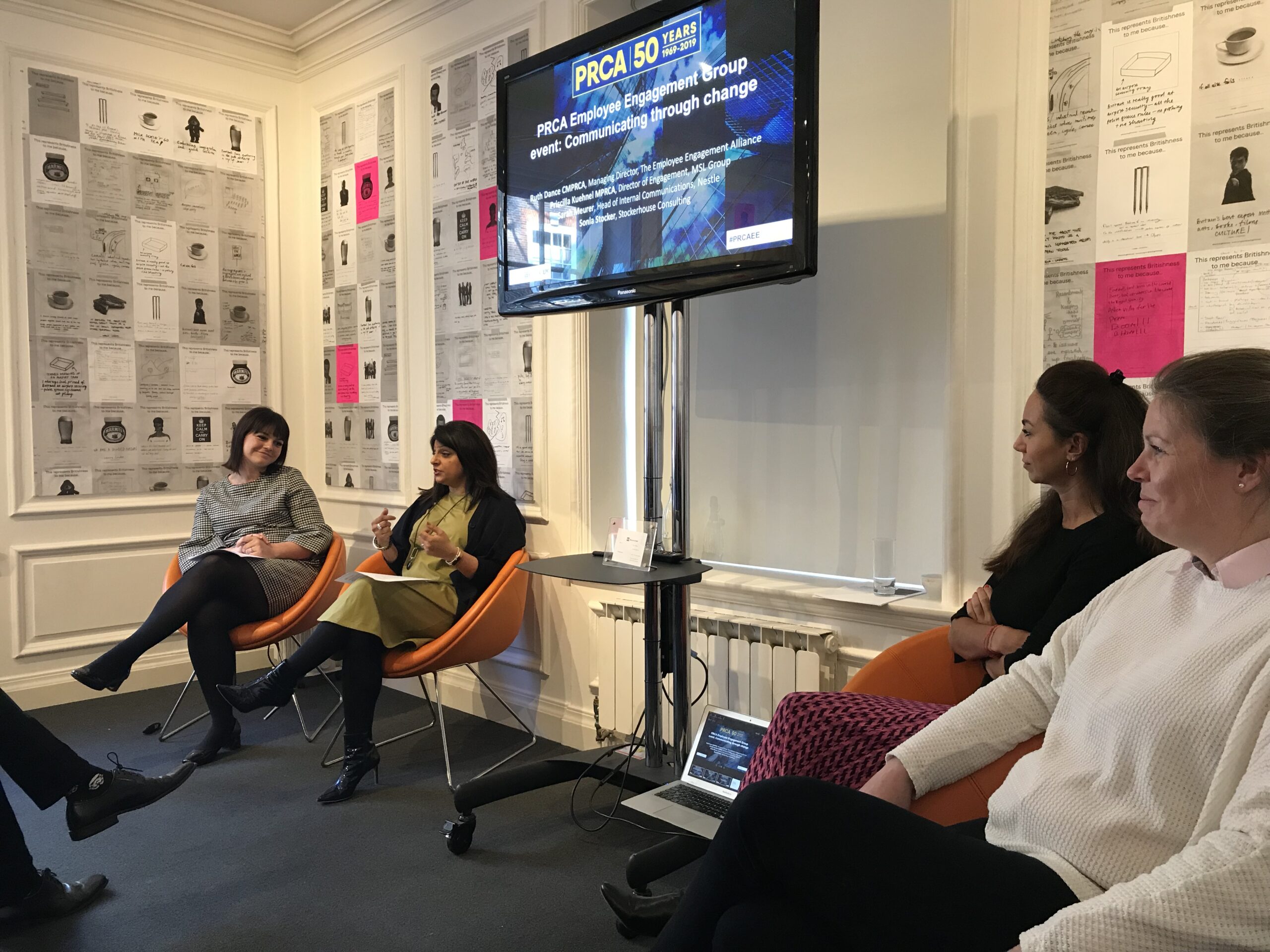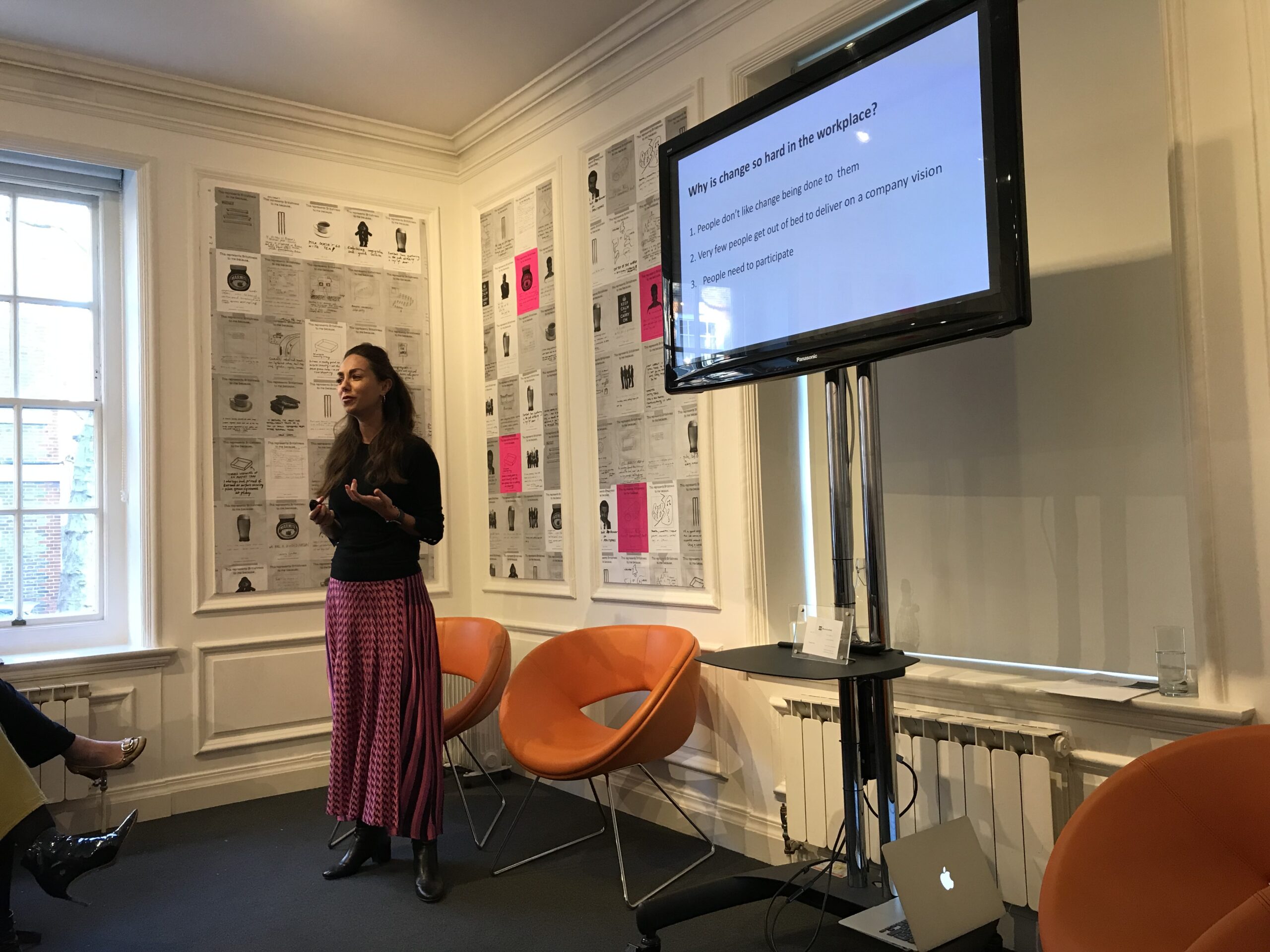
04th March 2019
How to effectively communicate through change

Change is a popular topic in the world of engagement right now and no wonder. From removing people’s desk bins and office moves to Brexit, Acquisitions and the rise of AI. No longer is simply sending ‘change comms’ expected or even accepted. We’re in a world where our employees are expecting a consumer-grade experience and roles in internal communications and engagement are paramount.
That’s why for the first PRCA engagement group breakfast event, chaired by our very own Ruth Dance, we decided to focus on communicating through change. Although an early morning, short breakfast event, it was packed full of learning, Inspiration (and lots of croissants and coffee too of course!).
My two top takeaways from Priscilla Kuehnel, Director of Engagement at MSL Group:
- Communication is paramount in times of uncertainty
If you don’t really know your role as it is, you certainly won’t know what your role will be after change. Ensuring all employees fully understand their current role and the real implication of how the change will affect them will ensure an engaged workforce even in times of organisational uncertainty. This means explaining in simple terms how each employee is contributing to the wider company purpose both now, and after the change has been implemented. - How to combat Employee resistance
Transparency is key. Employee resistance is almost always because of a lack of understanding and trust. Making every person in your organization aware of not only the honest implications of the change, but also the reasons behind it is vital for getting their support. If you don’t give people the real context behind changes, they will make up their own.
My two top takeaways from Sarah Meurer, Head of Internal Comms at Nestle:
- Unlock the power of storytelling
Storytelling can be incredibly powerful in getting your people behind a change movement, particularly when implementing cultural change. Sarah told us of a powerful story from when E.on were pushing for a more customer-centric culture. A recently single mother switched to E.on in order to save money but an administrative error meant that she was mistakenly charged £900. Because E.on’s employees weren’t empowered at the time, this money then took 39 days to be put back in her account. This story was told widely throughout the organisation to drive changes to enable E.on’s employees to properly serve their customers. After huge success from telling this single story, E.on decided to start every meeting with a customer story which completely transformed their culture. Powerful stories such as this exist in every organisation. Find the right story that supports the change you are trying to implement, communicate it well and you will transform your organisation. - Find and use your trust network
Find the trusted people in your organisation and use them as advocates. Quite often these people aren’t the people you would typically use to help communicate your initiatives such as the CEO or line managers, but are people who have been in the business for a long time. Identify those individuals and consult with them on your communication style and tone when delivering change. Make them advocates of your change movement and give them all the information and answers so they are able to drive the change through their network.
The learning sessions were followed by a panel discussion where Sarah, Priscilla and Ruth were joined by Sonia Stocker of Stockerhouse Consulting.
My top takeaways from the panel discussion were:
- Leadership evolution: The old hierarchical pyramid doesn’t work anymore. Leaders create trust by being honest about change drivers and context and involving their people in the process.
- Use immersion to get buy-in: Bring external perspectives in or take people out to shadow other organisations who are going through similar changes.
- Measurement: Use numbers to get people to drive the right behaviours. Ask HR to include questions in surveys and monitor progress that way. If you can’t get internal numbers, use external reports such as the Leesman Index.
With over 50 comms professionals in the room for an early breakfast event, this was certainly a memorable morning for me and it’s great to see the twitter community agreed:






